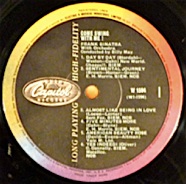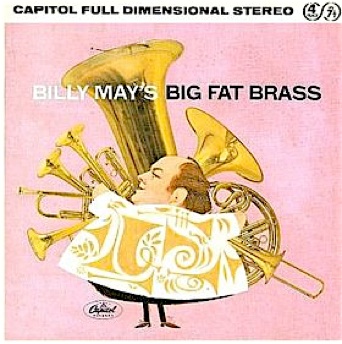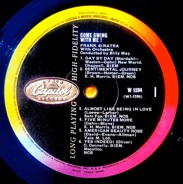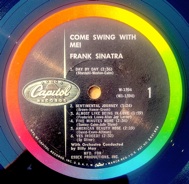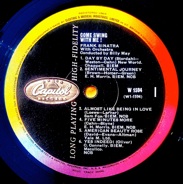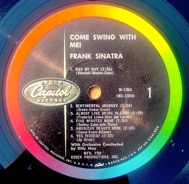Come Swing with Me - 1961

I’ve never understood why a big band album that Sinatra made with Neil Hefti stole the album title that this album should have had, as this album has nary a saxophone or violin in sight, while the Hefti album features relatively boiler-plate arrangements with a standard jazz band lineup. This album, meanwhile, is brass, brass, and more brass.
In fact, the idea for the album was supposedly in reaction to Billy May’s own May of 1958 Big Fat Brass album, as heard here (Click on the photo below):
The real SINATRA AND SWINGIN’ BRASS!
MMMmmmmmmmm, that’s some tasty brass writing. Too bad they didn’t fully get Billy May to arrange Come Swing with Me! According to Nat Cole expert Jordan Taylor (as posted by him at SH.TV, here), the BYU archives indicate that only two or three (depending on which file you believe) of the twelve Come Swing with Me tracks were actually arranged by May, with either three or four arranged by Skip Martin, and the balance arranged by Heinie Beau, who also ghostwrote roughly half of Sinatra’s Come Dance with Me album, also credited publicly to May.
As far as Sinatra’s contributions to this album bearing his name, the performance is pretty good considering that by this juncture Sinatra was solidly into “contractual obligation” mode where Capitol was concerned. It’s not his best work, but it is still of a very high standard. To put things into perspective, consider these important chronological details:
•By the time of these late-March, 1961, sessions, Sinatra had already released his first single on Reprise Records, The Second Time Around.
•Ring-a-Ding Ding was already “in the can,” and was only not yet on the shelf in record stores due to a “snarl” (Billboard’s wording) with the cover art. It would be released about two weeks after the recording sessions for Come Swing with Me.
•Sinatra was burning the recording candle at both ends, presumably to get that pesky contractual obligation monkey off his back. On March 22 and 23, he would record four songs per day at Capitol for Come Swing with Me, then buzz across town to Radio Recorders and record four more tracks each evening intended for, but not used on, Reprise’s I Remember Tommy album. (That album would be re-recorded later.)
Although Sinatra’s Capitol years were sunsetting, Capitol’s recording quality was arguably at its zenith, with results that remain stunningly good sixty years later. (Yes, you are old.) Let’s compare some of the mono releases. NOTE: These brief sample clips mirror those already available free of charge at Amazon.com and iTunes.
To my ears, the early UK pressing is the best-sounding LP of the four sampled above.
So, is it a fold down? Steve Hoffman has posted publicly on his forum that there are separate mono and stereo mix reels at Capitol, so I don’t think that there are any mono releases that are technically a fold down from stereo tapes. (For one thing, compression levels appear to be substantially different -- and more aggressive -- on mono releases, although that could be added during cutting.) However, the mono version of one song, “American Beauty Rose,” appears to be derived from the stereo mixdown tape, not from the 3-track session tapes, as outlined on the forthcoming “Recording, mixing, and Tape Sources” page.
Please continue on to the stereo samples. Click here.

Sinatra in Swingin’ Mono!
Click the photos below to hear audio from “American Beauty Rose” from the 2010 version of this website.
(Clips mirror the free Amazon.com samples -- no free music!)
Click photo to hear clip from original D1 pressing.
Click photo to hear clip from original D6 pressing, courtesy SH.TV’s “stevelucille.”
Click photo to hear clip from early Japan pressing, courtesy SH.TV’s “stevelucille.”
Click photo to hear clip from original UK 1N pressing.
Reel-to-reel audio sample courtesy SH.TV’s “stevelucille.” Click on photo to listen.
Below: “Day by Day”
(New for 2021! Click photos for audio.)
Below: “Sentimental Journey”
(New for 2021! Click photos for audio)
Above: Original D6 USA LP.
Above: Original 1N UK LP.
Above: Original D6 USA LP.
Above: Original 1N UK LP.
Recorded March 20-22, 1961
Arrangements by Heinie Beau, Skip Martin, Billy May
Conductor: Billy May
Produced by Dave Cavanaugh
Released July 31, 1961


